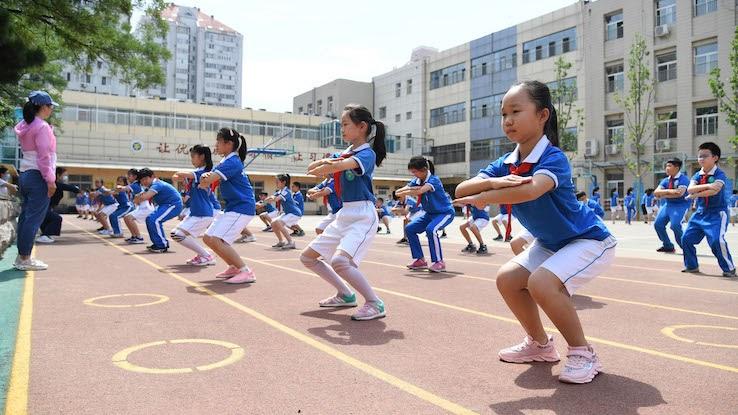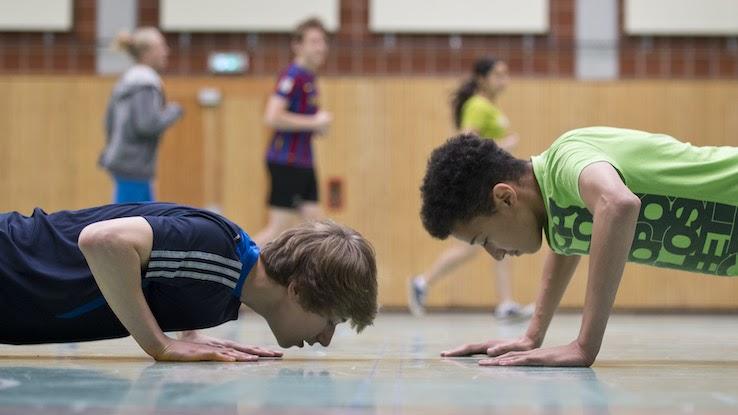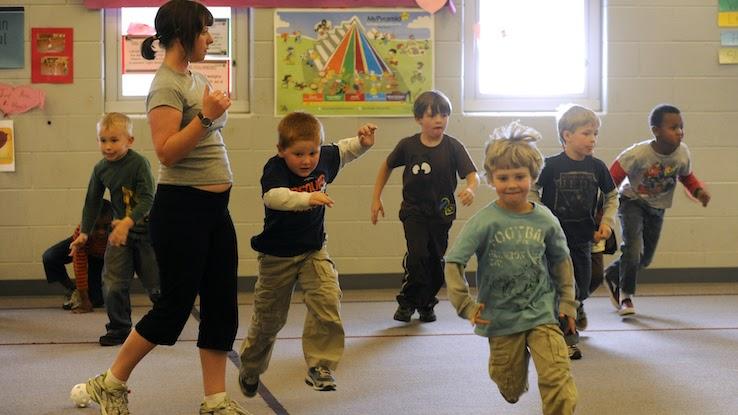What Is Physical Education and Why Is It Important?

Physical activity offers many benefits for folks of all ages, but, in addition to promoting fitness, physical education can help kids develop many useful skills. This is precisely why physical education — often called P.E. — has been implemented into school curriculums the world over. So, let’s explore just what P.E. is and how it can be beneficial to everyone — not just young athletes.
What Is Physical Education?
Taught in schools as a way for students to develop physical fitness, physical education (P.E.) can also help students hone their teamwork skills and refine their strategic thinking abilities. In classes, students often participate in team sports, like soccer and basketball, as well as more individual sports, like gymnastics.

With this in mind, physical education has been a requirement in schools across the world for hundreds of years. When schools across Europe began implementing formal P.E. programs during the 1800s, American schools followed suit. By the early 1900s, the States passed legislation that made P.E. a required course. According to the Centers for Disease Control and Prevention (CDC), “supporting schools to establish physical education daily can provide students with the ability and confidence to be physically active for a lifetime.”
Common Types of Physical Activity
According to the National Heart, Lung, and Blood Institute, P.E., or any type of physical activity, typically incorporates four main types of exercises — aerobic, muscle-strengthening, bone-strengthening, and stretching activities.

Aerobic activity, which includes running, jumping, and walking, benefits your heart and lungs. Looking to increase one’s stamina, power, and strength? This can be accomplished through muscle-strengthening activities, which include pushups and situps as well as through bone-strengthening activities, which include jumping rope and lifting weights. Finally, stretching before and after P.E. is vital when it comes to improving flexibility and preventing injury.
What Are the Goals of Physical Education?
Since its formal implementation in schools, P.E. curriculum has set forth particular benchmarks. As such, the four primary objectives of physical education are improved physical fitness; appreciation of physical activity; sportsmanship development; and improved social skills.

Other objectives of physical education include body awareness, skill development, and personality development. Participating in P.E. helps kids explore what kinds of physical activities speak to their strengths and which might be areas for improvement. Ultimately, it’s a real confidence builder when taught properly.
Physical Education Improves Physical Fitness and Sportsmanship Skills
Close to 14 million children and adolescents between the ages of 2 and 19 are medically obese. According to the Office of Disease Prevention and Health Promotion, physical activity can help prevent mitigate obesity and the issues that stem from it, which include heart disease, diabetes, stroke, and high blood pressure. Children who are exposed to physical education on a regular basis tend to lead more active lifestyles in general, which sets them up for maintaining these habits in adulthood too.

In addition to helping students move their bodies, P.E. can help teach sportsmanship, teamwork, and cooperation. Often, P.E. students must work together in teams, which teaches them how to work toward a common goal. They also learn that in games, as in life, sometimes you win and sometimes you lose. And, no matter the outcome, it’s important to be a good sport.
Physical Education Helps With Confidence and Body Awareness
Without a doubt, physical education gives students the chance to try new sports and develop new athletic pursuits. Additionally, younger children are able to develop motor skills and work on balance and flexibility. Developing these skills can help build self-confidence in physical ability as well as an appreciation of the importance of physical activity.

P.E. also teaches students about body awareness. This means that kids will learn what they are physically able to do and their limitations. For example, some students might excel in sports that require strength, while others might have a knack for activities that demand flexibility and balance. Understanding that we all have unique abilities is essential to healthy development.
Physical Education Helps Kids Develop Social Skills and Personality Traits
Socializing is a huge part of P.E. After all, nothing fosters teamwork like (gently) pushing kids out of their comfort zone. In this recreational setting, they’ll have to take risks, but they’ll also learn to communicate with others; resolve conflicts (without storming off); and learn to either lead or take direction.

Participating in these recreational activities also helps improve students’ enthusiasm, motivation and perseverance. That is, they’ll want to help their team excel and cheer on their teammates from the sidelines. Needless to say, P.E. is more than just the chance to run around and get some energy out. With just a few hours of physical education a week, students can develop beneficial habits, skills, and traits that will last a lifetime.





